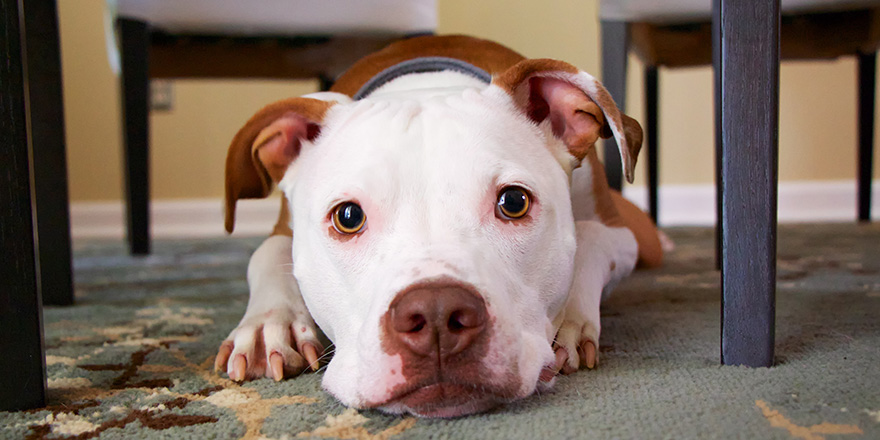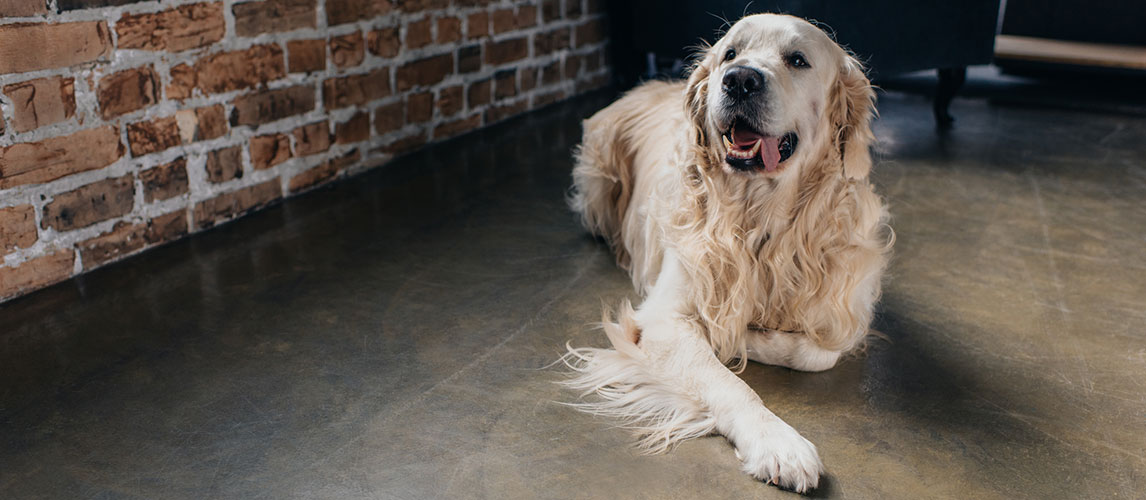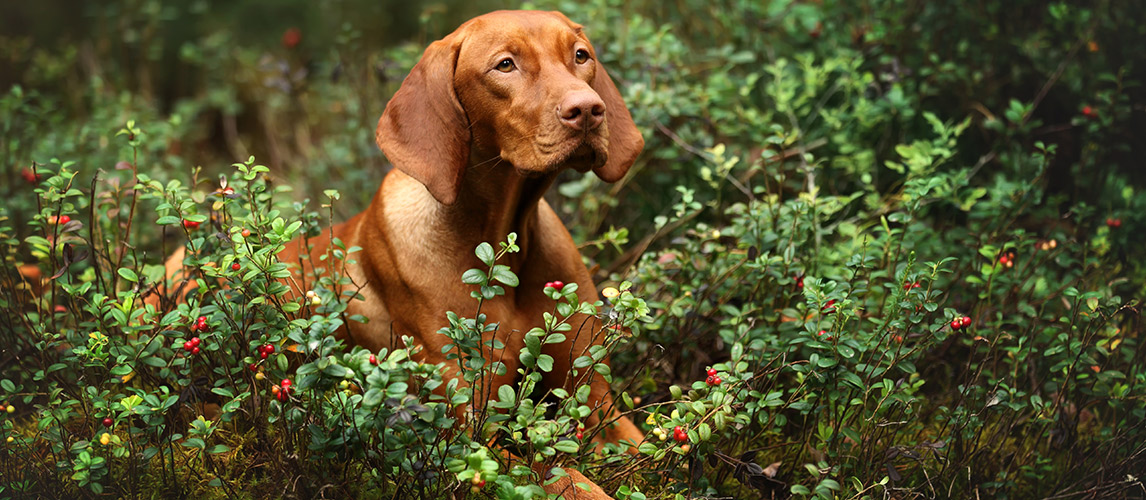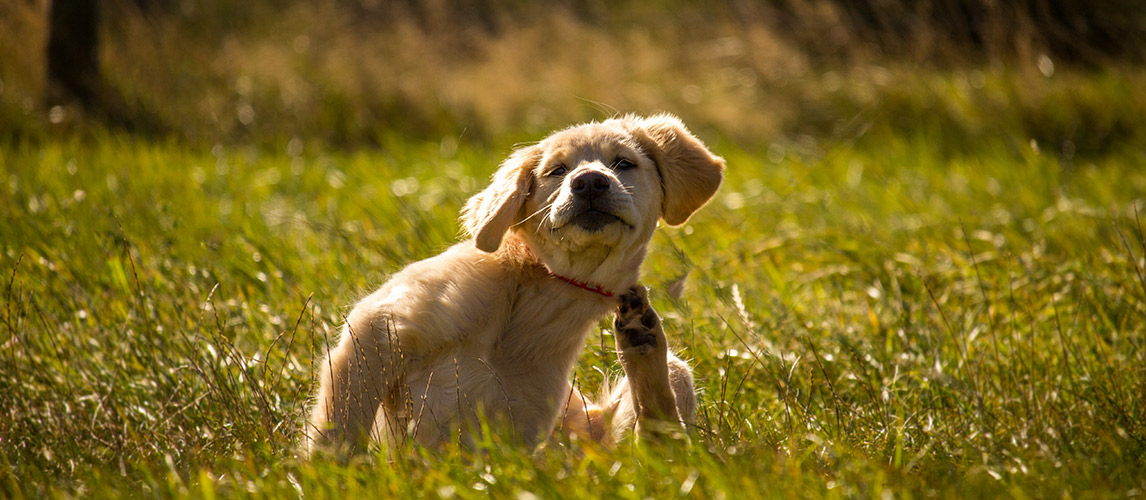Dog scooting may sound like a cute canine sport, but in reality, this is something that dogs do when they have an itchy bottom, feel discomfort, or even pain. Dog owners will likely be familiar with this antisocial behavior, characterized when a dog scoots across the floor, rubbing its bottom on the carpet or any other surface that helps relieve the itching.
Scooting in dogs is pretty common and not something you will necessarily need to speak to a veterinary professional about.
But it is important to get to the bottom of the problem if you pardon the pun!
If you catch your dog scooting on the floor, then there are several things you can do. In this article, we will look at the main reasons why dogs scoot and the possible causes. We have also answered your most commonly asked questions regarding dog scooting, so by the end, you will have a clearer idea of how to treat your pup if your dog continues to scoot.
Why Do Dogs Scoot?
If your dog is scooting, then the most likely reason why they are doing this is that they have an itchy rear end. A dirty bottom can cause itching, and this is probably the easiest problem to solve as you just need to ensure that your dog’s bottom is clean.
If in doubt, you should always consult your local veterinary clinic for advice.
The following conditions can also cause your dog to scoot…
Fecal Contamination
If remnants of poop are on or around your dog’s anus, this can cause issues for your canine companion. This can especially occur after a bout of diarrhea or constipation, where your dog’s poop has matted and become stuck around their anal area. A dog’s rear end is sensitive, so this can cause significant itching for your pup. If your dog drags its bottom along the floor, then the first thing you should do is check to see how clean the dog’s rear end is. If it looks a little dirty, gently clean your dog’s bottom with warm water and a soft cloth. If your dog is groomed professionally, ask your groomer to keep the fur around this area neat and short to prevent any future skin irritation.
Anal Sac Glands
Let’s talk about the anal gland, also known as the anal sac. Often anal gland issues are the main cause of dog scooting, and male and female dogs can suffer from anal gland issues. A dog has two small anal sacs on either side of their anus. These glands play an important role in your dog’s bodily function as it releases a scent to other dogs – essentially, it’s how dogs communicate with one another. Every time your dog poops, their anal gland releases a liquid – the problem is that a dog’s anal sacs are prone to blockages.
You’ll likely know when this is happening for your dog as they will pay a lot of attention to this area, licking their rear end more often and scooting across the floor. If your dog isn’t doing this persistently, then it’s likely that they may have cleared the blockage manually, but it’s not likely that they can do this and will need help to do this manually. Full anal glands can be manually “expressed” by a professional groomer or veterinary professional. Blocked glands can easily lead to infection, anal gland impaction, and anal gland abscesses, so be sure to consult an expert as soon as possible if you suspect this is a problem for your dog.
Worms
Another common cause of dog scooting after pooping is worms. The three common worms that regularly affect dogs are tapeworm, roundworm, and lungworm.
Lungworm and roundworm can be pretty serious if not detected early, but the chances are that it’s a tapeworm that is causing itching around the rectum. These intestinal parasites are long and flat and live in the small intestine relatively undetected. If they break off (which is pretty common), they make their way through the anus, causing severe itching. You may even notice pieces in your dog’s poop.
You May Also Like: Best Dewormers for Dogs
How Do Dogs Catch Worms?

Tapeworms are passed through ingesting undercooked or raw meat, ingesting worm-infested fleas, or grooming another pet with worms. They can grow a staggering 28 inches long and cause great discomfort for your dog. Luckily worms are super easy to treat – ask your veterinarian for advice.
Rectal Prolapse
A prolapse can is characterized by an interior part of the anus protruding through the outside of the sphincter. This can be a serious issue if not detected earlier, but luckily, it’s easily treatable. If your dog is scooting and licking the area, then this may be the cause.
If you suspect your dog has a prolapse, consult your vet, who may suggest a change in your dog’s diet, stool softening medication, or surgery.
Wounds
An open sore or wound around the anus can become super itchy and be the main cause of scooting in dogs. If your dog has had recent surgery, then they may need a distraction so that they do not scoot or scratch the area. Constipation can also cause your dog to scoot – if this is frequently happening, then speak to your vet about stool softeners or maybe switching to a high-fiber diet or taking fiber supplements.
Tumors
Whether or not they are benign or malignant, tumors can cause skin irritation on the dog’s skin around its anus. Suppose your dog is scooting and they have had a recent worm treatment and don’t seem to be displaying any other signs or symptoms on this list. In that case, it’s worth speaking to a veterinary professional who will be able to look at your dog and rule out all possible causes.
Frequently Asked Questions
There are many causes of dog scooting; dog scooting treatment can vary from dog to dog. However, there are a few things that you can do before consulting a professional.
Home remedies for dog scooting...
Firstly, make sure your dog's bottom is always clean. Poop around your dog's anus can cause infections, so ensure you regularly wipe your dog's bottom.
If you notice a foul odor, this could indicate an anal gland infection caused by blocked anal sacs. Anal gland infections can occur when your dog's anal glands need expressing. You can speak to your groomer or vet about doing this manually.
Another easy way of preventing scooting is to ensure that your dog is up to date with their worming treatment. This is usually just a pill; the treatment can last a few months.
Check your dog's stools. If they are hard, then this may be causing pain while passing, so your dog's diet may need looking at too. Food allergies are often a cause of scooting.
A warm compress can soothe your dog's bottom and help minimize skin irritation, so you can apply this to your dog's rear end to bring them instant relief.
Not necessarily. There are many reasons why your dog may be scooting, but worms are fairly common. Ensure that your dog is up to date with their worming treatment to prevent this. If they are still scooting, it may be an issue with the dog's anal glands, which is also common as anal glands can block fairly easily. A full anal sac can usually be detected by looking to see if the dog is licking the area around their anus. Plus scooting, of course, and a foul smell that has been described as intensely fishy. If they display these symptoms, they may need their anal glands expressed.
If the problem is persistent, you should take your dog to the vet to be checked out. Changes are that your dog needs their anal glands expressed, which is best left to a professional. A dog's anal sacs can become blocked easily, and expressing them manually can be tricky. There are also other reasons why dogs scoot, including food allergies, worms, and tumors.
You shouldn't have to wipe your dog's bottom regularly, but it is a good idea to do this weekly. Most dogs have clean bottoms, but some need extra help with a warm cloth. Pet owners often forget to lift the dog's tail too, which is a mistake. Your dog can have a build-up of poop under their tail, which can cause infections, so don't forget to wipe this area too.
Anal glands secrete a strong scented oily fluid when they pass bowel movements, which is how they communicate with other animals. An anal gland problem can affect male or female dogs and breeds, but certain small breeds are more prone.
Breeds that are prone to issues with their anal glands include Chihuahuas, Cocker Spaniels, Basset Hounds, Miniature and Toy Poodles, Beagles, and Lhasa Apsos.
You can express your dog's anal glands yourself, but it's a complicated, messy, and smelly process - definitely not advised. Please consult a professional if you feel that your dog needs their anal glands expressed.
There is no one correct answer to this question, as it largely depends on your dog and whether or not they have other symptoms. Some dogs need expressing every few months, whereas others never need their glands expressed. Again, we always advise speaking to a professional for the best advice.
Most dogs do not need their anal glands expressed as they involuntarily do this themselves. If your dog's nutritional needs are being met and they eat a well-balanced diet and get plenty of exercises, then they shouldn't have to have their glands expressed.
However, if your dog is scooting regularly, they may need their glands expressed.
If your dog has anal gland issues and their glands are full, they may develop an abscess which can often be detected by bloody discharge around the anus. This can lead to complications and may need medications and even surgery.
Note: The advice provided in this post is intended for informational purposes and does not constitute medical advice regarding pets. For an accurate diagnosis of your pet's condition, please make an appointment with your vet.







